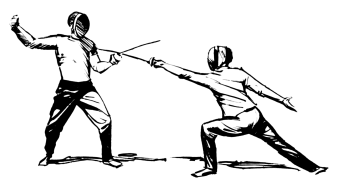Over that last 50 years many computer languages have evolved. In 1995 JavaScript (originally Mocha) appeared on the scene. It is based on ECMAScript a Standard for scripting languages. Unlike html that works on static parts of the webs design, JavaScript allows us to do dynamic actions including a little animation to improve user interactions on websites. It can be written in the same document we use for our html coding. Java script is used to run dynamic actions after the page has loaded. It is the only scripting language supported by all web browsers that support client-side.
JavaScript became popular despite one or two draw backs. It can be slow to processes or take several lines of coding for one simple action. However, these problems have been overcome with the development of frame works that created syntactical shortcuts for JavaScript users. About 2006, JavaScript framework know as JQuery got its start and became a library for collection of open source coding. I like JQuery because I do not have to be a JavaScript expert to used it, and the coding has already been debugged by the code author, and its free. I likely could get by just looking for JQuery items rather than creating my own javascript coding from scratch.
Sources:
https://www.w3.org/community/webed/wiki/A_Short_History_of_JavaScript
http://www.jquery-tutorial.net/introduction/what-is-jquery/
http://www.bestprogramminglanguagefor.me/why-learn-javascript

 It now April, and the thaw is on full force, changing the soundscape around my house. In the morning the icy crust on the snow crunches under my weight, then by afternoon, each step if followed by a swash of slush. I fall asleep to the sound of water drops sliding of the second story roof snow pack and banging on to the metal awning below.
It now April, and the thaw is on full force, changing the soundscape around my house. In the morning the icy crust on the snow crunches under my weight, then by afternoon, each step if followed by a swash of slush. I fall asleep to the sound of water drops sliding of the second story roof snow pack and banging on to the metal awning below.


 Let’s play twenty questions: What has a tail, beak, chin, leg, arms, shoulders, spines, neck, eye, and hairline, but no blood or brains?
Let’s play twenty questions: What has a tail, beak, chin, leg, arms, shoulders, spines, neck, eye, and hairline, but no blood or brains?

 Snow Buntings, another early migrant has been sighted in Interior Alaska. I saw a small flock along the Chena Hot Springs Road. Golden Eagles and Red-tailed Hawks are also on the move, according to the hawk watchers at
Snow Buntings, another early migrant has been sighted in Interior Alaska. I saw a small flock along the Chena Hot Springs Road. Golden Eagles and Red-tailed Hawks are also on the move, according to the hawk watchers at